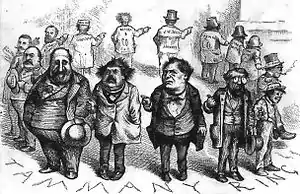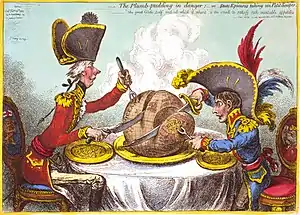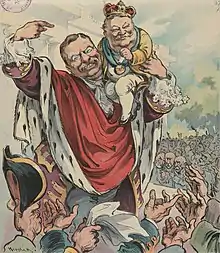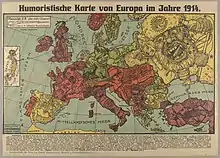Portal:Cartoon
The Cartoon Portal
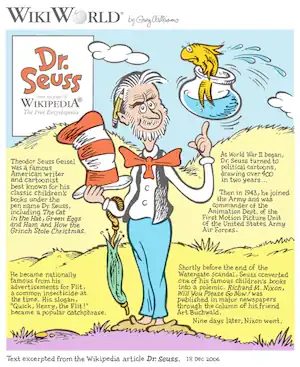
A cartoon is a type of visual art that is typically drawn, frequently animated, in an unrealistic or semi-realistic style. The specific meaning has evolved, but the modern usage usually refers to either: an image or series of images intended for satire, caricature, or humor; or a motion picture that relies on a sequence of illustrations for its animation. Someone who creates cartoons in the first sense is called a cartoonist, and in the second sense they are usually called an animator.
The concept originated in the Middle Ages, and first described a preparatory drawing for a piece of art, such as a painting, fresco, tapestry, or stained glass window. In the 19th century, beginning in Punch magazine in 1843, cartoon came to refer – ironically at first – to humorous artworks in magazines and newspapers. Then it also was used for political cartoons and comic strips. When the medium developed, in the early 20th century, it began to refer to animated films that resembled print cartoons. (Full article...)

In print media, a cartoon is a drawing or series of drawings, usually humorous in intent. This usage dates from 1843, when Punch magazine applied the term to satirical drawings in its pages,[1] particularly sketches by John Leech.[2] The first of these parodied the preparatory cartoons for grand historical frescoes in the then-new Palace of Westminster.

Selected article -
Krazy Kat is a comic strip created by George Herriman that appeared in U.S. newspapers between 1913 and 1944. It was first published in William Randolph Hearst's New York Evening Journal. Set in a dreamlike portrayal of Herriman's vacation home of Coconino County, Arizona, Krazy Kat's mixture of surrealism, innocent playfulness, and poetic language have made it a favorite of comics aficionados and art critics for more than eighty years. The strip focuses on the relationship triangle between its title character, a carefree and innocent cat of indeterminate gender (referred to as both male and female), her antagonist Ignatz Mouse, and the protective police dog, Officer Bull Pupp. Krazy nurses an unrequited love for the mouse, but Ignatz despises her and constantly schemes to throw a brick at her head; for unknown reasons, Krazy takes this as a sign of affection. Officer Pupp, as Coconino County's administrator of law and order, makes it his unwavering mission to interfere with Ignatz's brick-tossing plans and lock the mouse in the county jail.
Selected character -
_retouched.jpg.webp)
Superman is a fictional character and one of the most famous and popular comic book superheroes of all time. Created by American writer Jerry Siegel and Canadian artist Joe Shuster in 1932 while both were growing up in Cleveland, Ohio, and sold to Detective Comics Inc. the same year Superman debuted in Action Comics #1 (June 1938), the character has since appeared in radio serials, television programs, films, comic books, newspaper strips and video games, contributing to his long-standing ubiquity. Superman is born Kal-El on an alien planet — later named Krypton — and is rocketed to Earth as an infant by his scientist father moments before the planet's destruction. The rocket lands on Earth, where he is found by passing motorists who adopt him and give him the name Clark Kent. As Clark reaches maturity, he learns he has superhuman abilities which he resolves to use to help others, fighting anything from petty crime to universal threats. After adopting a Kryptonian fabric costume consisting of a blue shirt with a stylized "S" on the chest, a pair of red briefs over blue pants, a pair of red boots, and a red cape, he becomes Earth's champion, with the media giving him several nicknames including "The Man of Steel", "The Man of Tomorrow" and "The Last Son of Krypton". To keep his identity secret when not fighting evil as Superman, Clark lives among humanity as a "mild-mannered" reporter for the Metropolis newspaper The Daily Star (later changed to the Daily Planet). Clark works alongside reporter Lois Lane, with whom he is romantically involved (and married in the mainstream current comics' continuity).
Did you know... -
- ...that the film Green Lantern starring Ryan Reynolds has been in development since the 1990s and once included a comedic incarnation with Jack Black set to star?
- ...that the Simpsons short Good Night aired April 19, 1987 on The Tracey Ullman Show and was the first ever appearance of the Simpson family on television?
- ...that Morning Funnies was a fruit-flavored breakfast cereal featuring comic strip characters including Dennis the Menace, Hägar the Horrible, and Funky Winkerbean on the box?
- ...that Sozin's Comet: The Final Battle, the two-hour finale for Avatar: The Last Airbender, was the most-watched cable television broadcast in the week of its transmission?
Selected list -

There were 61 episodes of Avatar: The Last Airbender, an Emmy Award-winning American animated television series written and created by Michael Dante DiMartino (pictured) and Bryan Konietzko. It first aired on February 21, 2005 with a one-hour series premiere and concluded its run with a two-hour TV movie on July 19, 2008. The Avatar franchise refers to each season as a "Book", in which each episode is referred to as a "chapter". Each "Book" takes its name from one of the elements that the protagonist must master: Water, Earth, and Fire. The show's first two seasons each consisted of 20 episodes, while the third season had 21. In addition to the three seasons, there were two recap episodes and three "shorts". The first recap summarized the first eighteen episodes while the second summarized season two. The first self-parody was released via an online flash game. The second and third were released with the Complete Second Season Box Set DVD. The entire series has been released on DVD in both Region One and Region Two.
General images -
Selected biography -

Ralph Bakshi (born October 29, 1938) is an American director of animated and, occasionally, live-action films. As the American animation industry fell into decline during the 1960s and 1970s, Bakshi tried to bring a change in the industry by establishing an alternative to mainstream animation in independent and adult-oriented productions. From 1972 until 1994, he directed nine theatrically-released feature films, writing five of them, and oversaw ten television projects as a director, producer and animator. Beginning his career at the Terrytoons television cartoon studio as a cel polisher, Bakshi was eventually promoted to director. He moved to the animation division of Paramount Pictures in 1967 and started his own studio, Bakshi Productions, in 1968. Through producer Steve Krantz, Bakshi made his debut feature film, Fritz the Cat, released in 1972. It was the first animated film to receive an X rating from the Motion Picture Association of America, and the most successful independent animated feature of all time.
Subcategories

WikiProjects
- Main projects
- Arts • Animation • Comics • Entertainment • Visual arts
- Related Projects
- Anime and manga • Biography • Film • Fictional characters • Media franchises • Music • Television • Video games
Selected quote -
Topics
- Comic book
- Comic strip
- Digital comics
- Graphic novel
- Mobile comic
- Motion comics
- Trade paperback
- Webcomic
- Animator
- Animation director
- Animation studios
- Animation film festivals
- Feature-length films
- Short films
- Television series
- Computer-animated films
- Stop-motion films
- Traditional animation
- Limited animation
- Rotoscoping
- Stop Motion
- Clay
- Cutout
- Graphic
- Model
- Object
- Pixilation
- Puppetoon
- Computer animation
- Flash animation
- PowerPoint animation
- SVG animation
- Cel-shaded animation
- Crowd simulation
- Morph target animation
- Motion capture
- Non-photorealistic rendering
- Skeletal animation
Things you can do

- Requested articles: Fenwick (comics), Khimaera (comics), Mutant Underground Support Engine, Bruce J. Hawker, Marc Dacier, Hultrasson, Frankenstein Comics, Dave Johnson (comics), Paco Medina, Dappere Dodo, New Adventures of the Space Explorers, Habatales, Musical Box, Foo-Foo (TV series), Bonne nuit les petits, The Adventures of Lariat Sam, More...
- Images and photos needed: Request images that are needed from Wikipedia requested images of comics and animation to included in each articles.
- Stubs: Work on stubs in articles in Comics and Animation stubs.
- Infobox: Add infobox that are needed from Category:Comics articles without infoboxes and Category:Animation articles needing infoboxes in articles.
- Deletion sorting: Please see the collection of discussions on the deletion of articles related to comics and animation - compiled by WikiProject Deletion sorting
Related portals
Associated Wikimedia
The following Wikimedia Foundation sister projects provide more on this subject:
-
 Commons
Commons
Free media repository -
 Wikibooks
Wikibooks
Free textbooks and manuals -
 Wikidata
Wikidata
Free knowledge base -
 Wikinews
Wikinews
Free-content news -
 Wikiquote
Wikiquote
Collection of quotations -
 Wikisource
Wikisource
Free-content library -
 Wikiversity
Wikiversity
Free learning tools -
 Wiktionary
Wiktionary
Dictionary and thesaurus
More portals
-
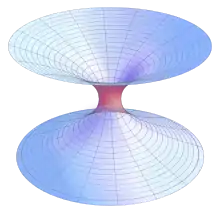 List of all portalsList of all portals
List of all portalsList of all portals -
 The arts portal
The arts portal -
 Biography portal
Biography portal -
 Current events portal
Current events portal -
 Geography portal
Geography portal -
 History portal
History portal -
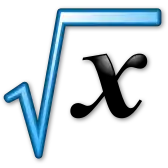 Mathematics portal
Mathematics portal -
 Science portal
Science portal -
 Society portal
Society portal -
 Technology portal
Technology portal -
 Random portalRandom portal
Random portalRandom portal -
 WikiProject PortalsWikiProject Portals
WikiProject PortalsWikiProject Portals
Sources
- Punch.co.uk. "History of the Cartoon". Archived from the original on 2007-11-11. Retrieved 2007-11-01.
- Adler & Hill 2008, p. 30.
_Ymir_2.png.webp)
.jpg.webp)
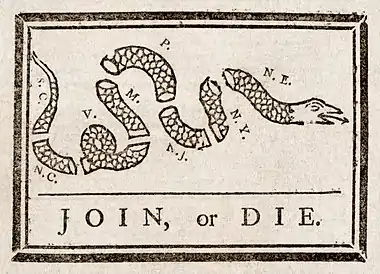
.jpg.webp)

